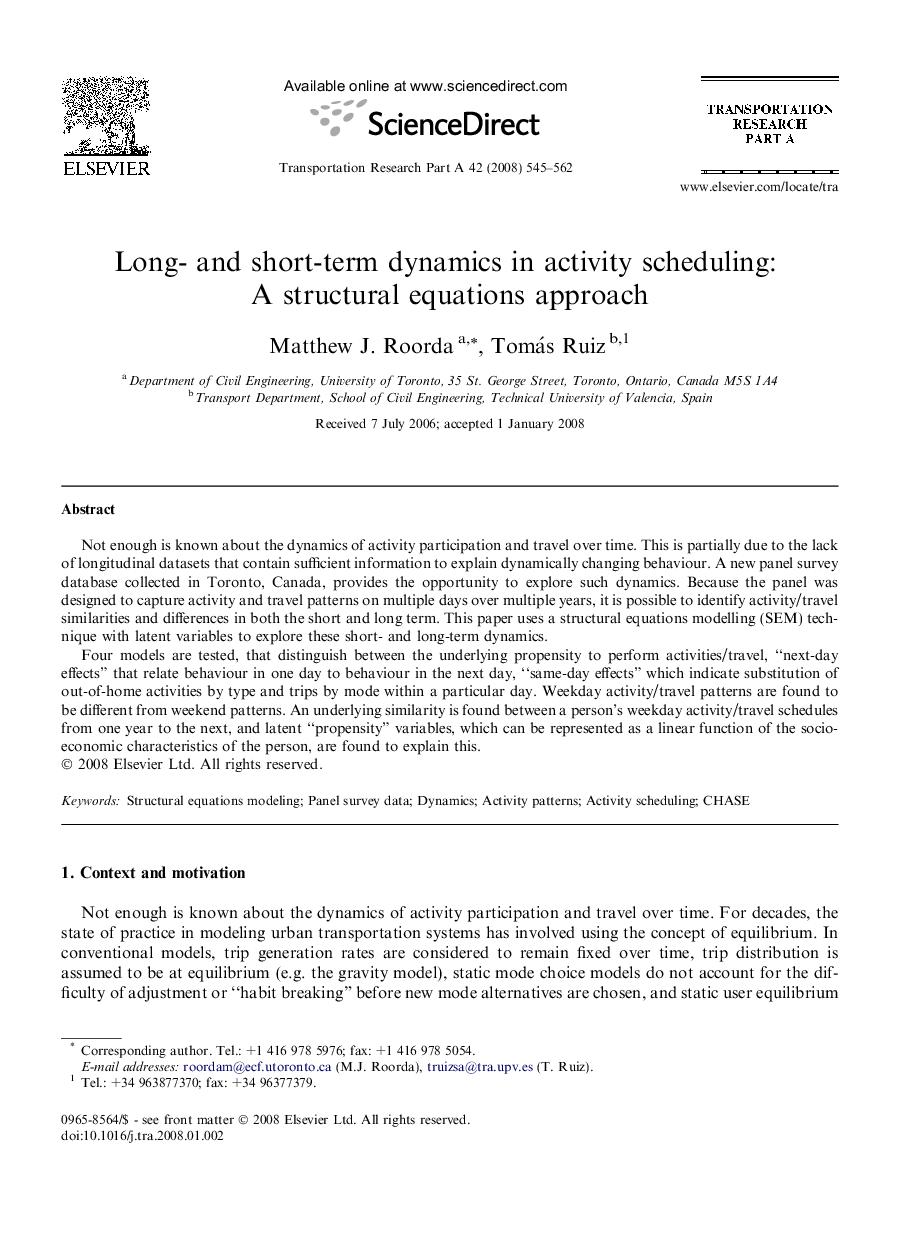| Article ID | Journal | Published Year | Pages | File Type |
|---|---|---|---|---|
| 311406 | Transportation Research Part A: Policy and Practice | 2008 | 18 Pages |
Not enough is known about the dynamics of activity participation and travel over time. This is partially due to the lack of longitudinal datasets that contain sufficient information to explain dynamically changing behaviour. A new panel survey database collected in Toronto, Canada, provides the opportunity to explore such dynamics. Because the panel was designed to capture activity and travel patterns on multiple days over multiple years, it is possible to identify activity/travel similarities and differences in both the short and long term. This paper uses a structural equations modelling (SEM) technique with latent variables to explore these short- and long-term dynamics.Four models are tested, that distinguish between the underlying propensity to perform activities/travel, “next-day effects” that relate behaviour in one day to behaviour in the next day, “same-day effects” which indicate substitution of out-of-home activities by type and trips by mode within a particular day. Weekday activity/travel patterns are found to be different from weekend patterns. An underlying similarity is found between a person’s weekday activity/travel schedules from one year to the next, and latent “propensity” variables, which can be represented as a linear function of the socioeconomic characteristics of the person, are found to explain this.
